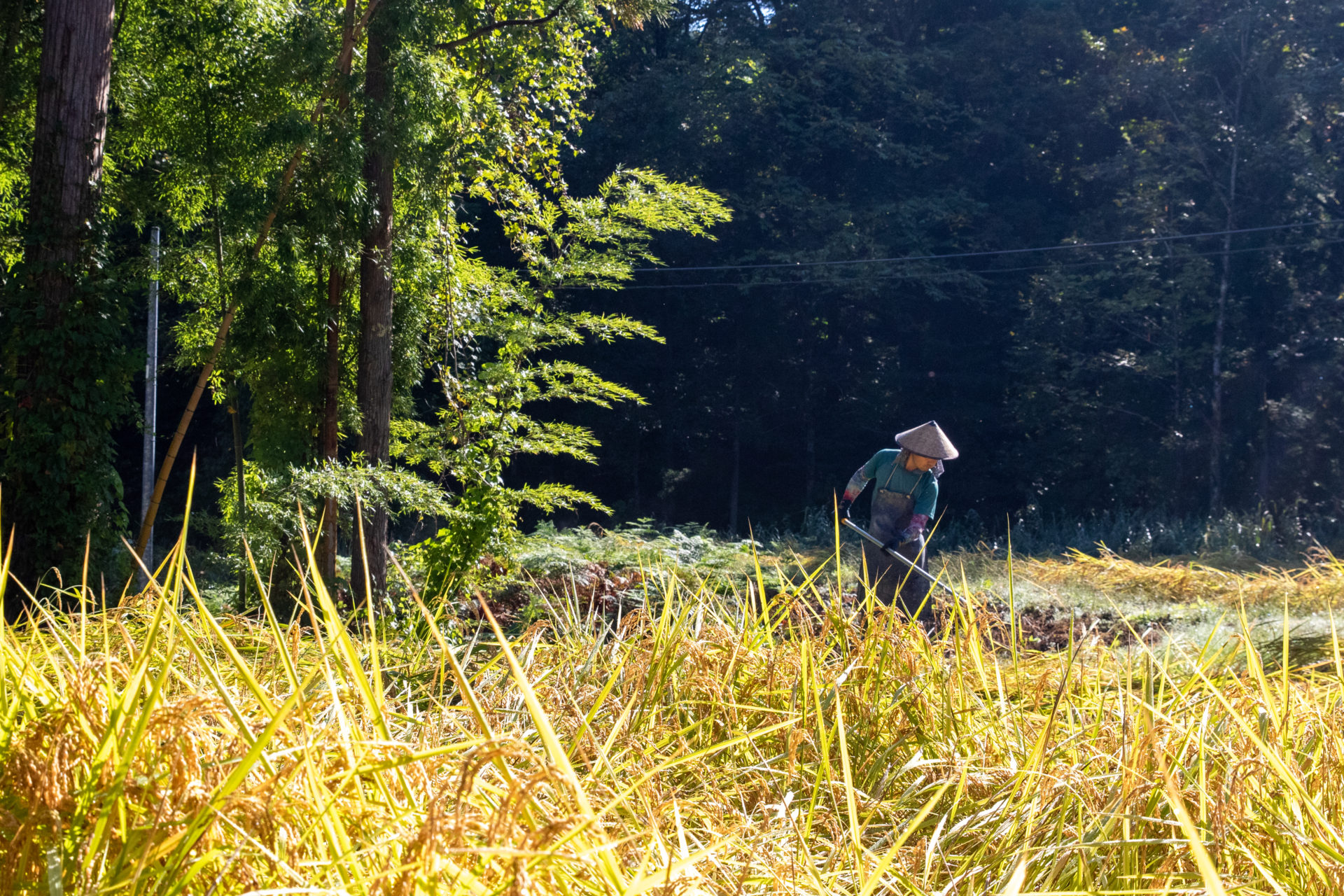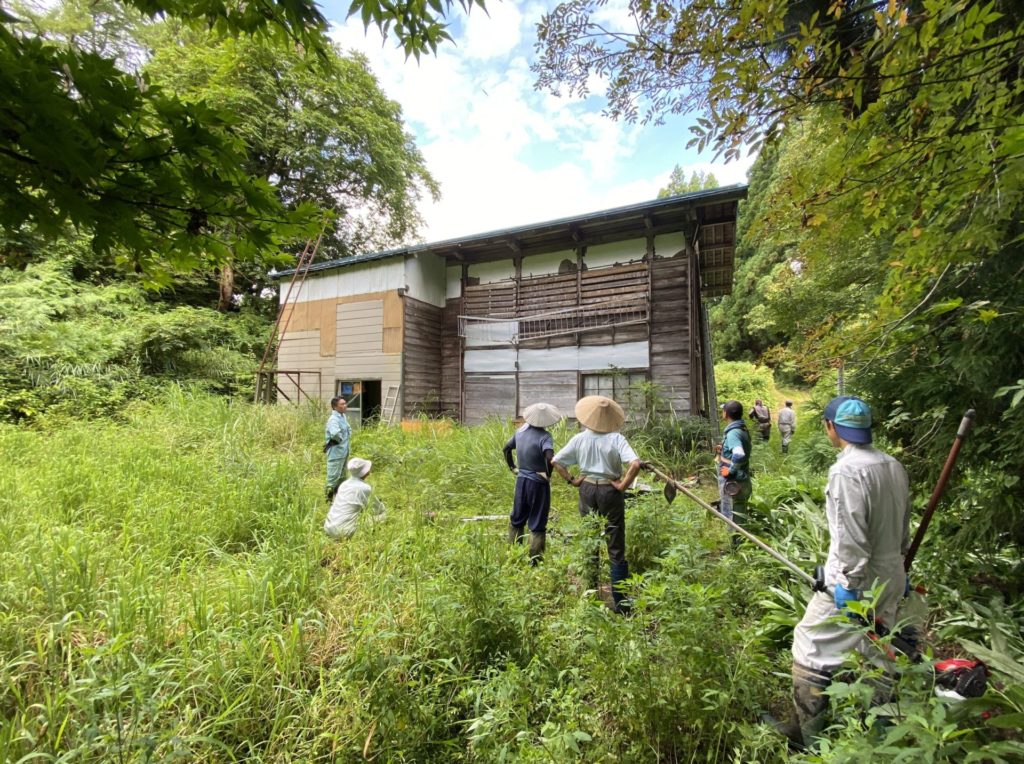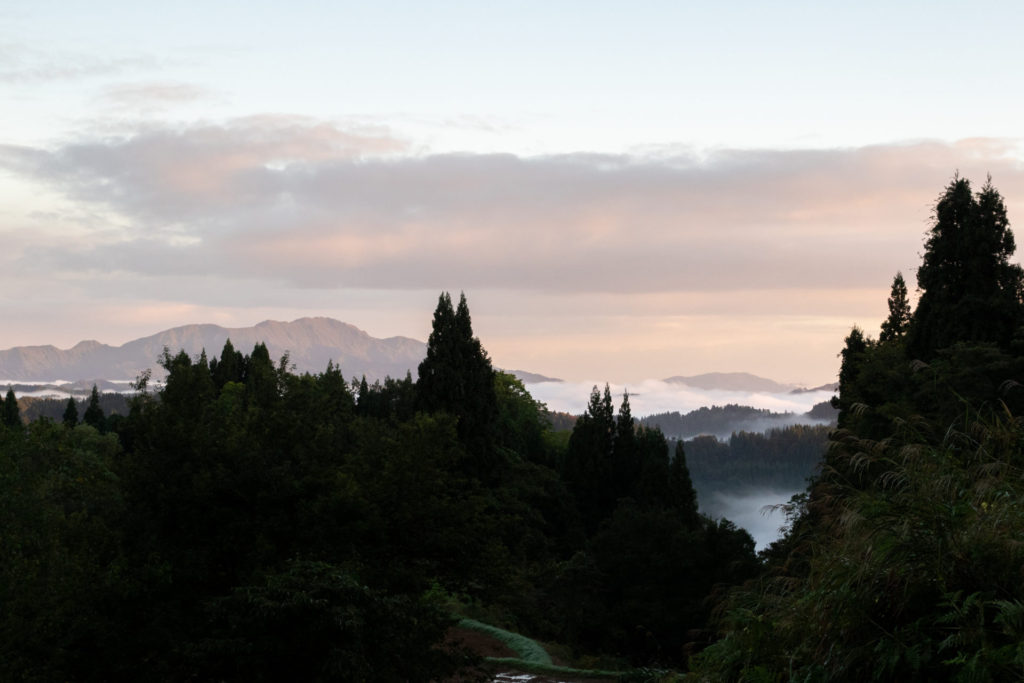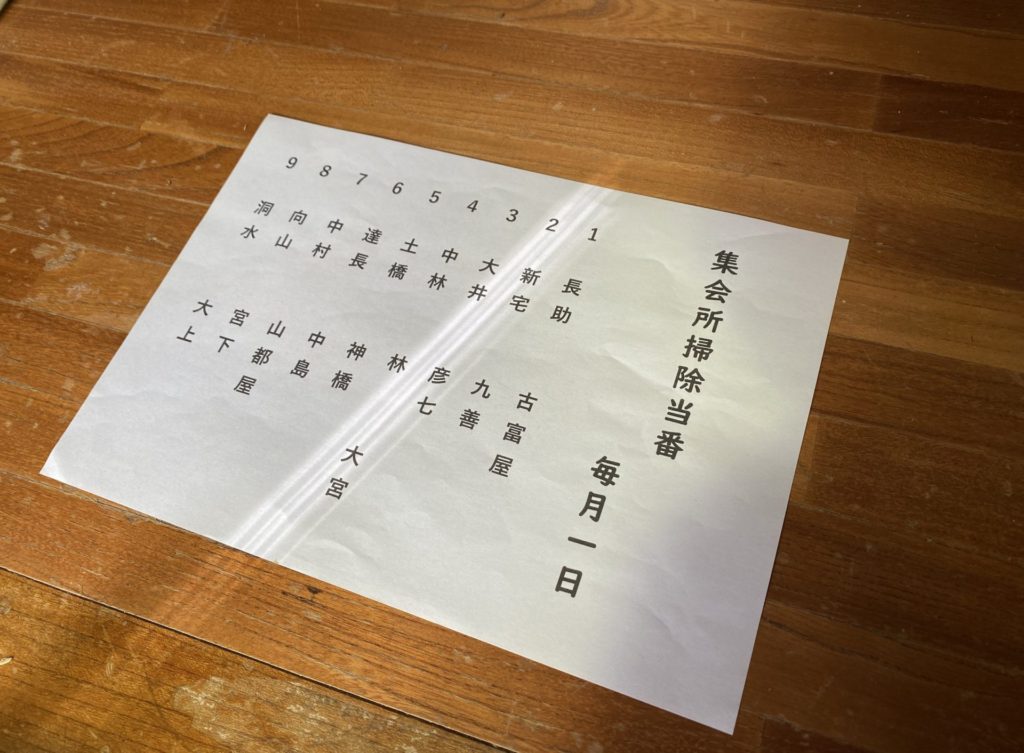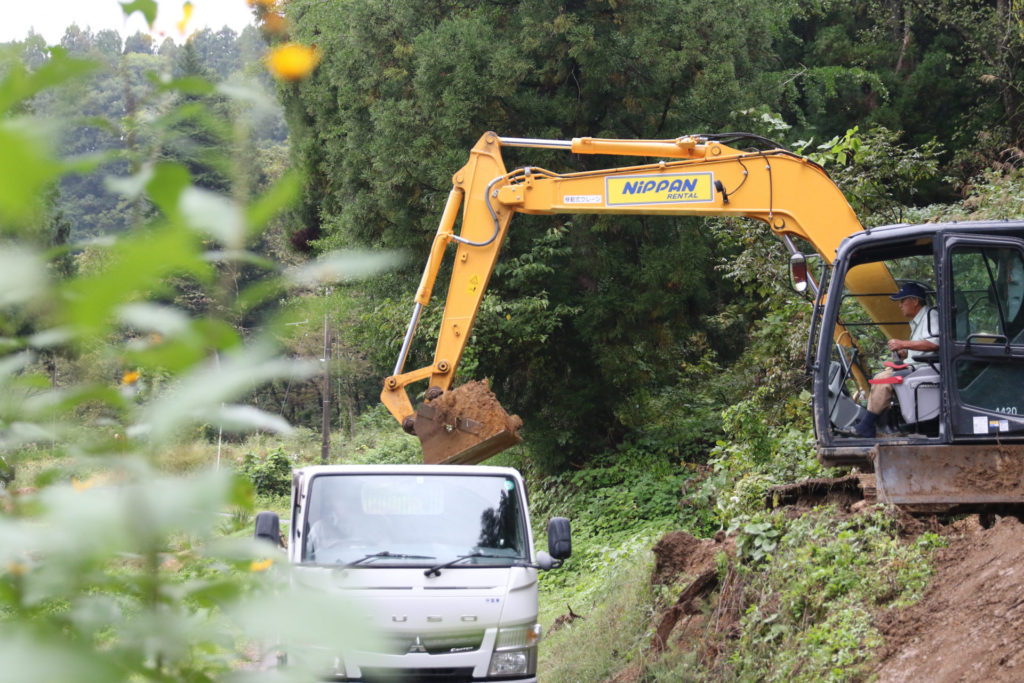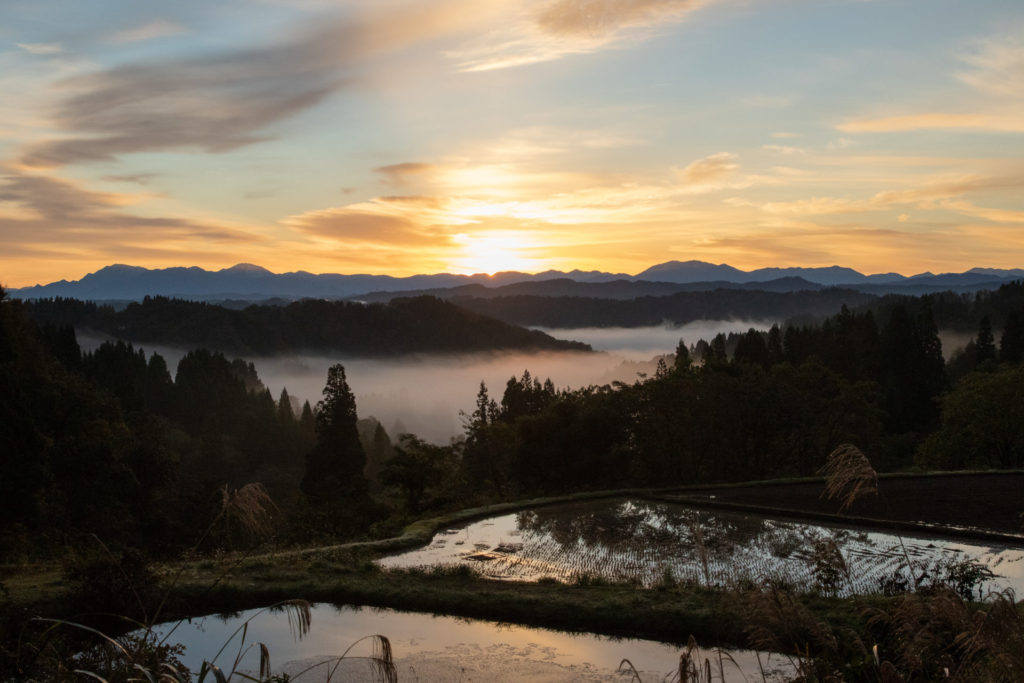I moved to the Kurokura area in Matsunoyama, Tokamachi in October to support community activities for three years. In the Kurokura area, the rice harvest is in full swing, and I was assigned to support the harvest. The harvesting process is a big event for farmers, and It is the busiest time of the year for farmers. I had a chance to experience the harvesting process that takes place during such a busy time. I would like to share my experience of the harvest process. Here, I would like to share with you the process of harvesting, not the traditional way of harvesting by hand, but the modern mechanized way. I would like to introduce the actual process that the farmers are doing.
Rice harvesting
In the Matsunoyama-Kurokura area, there is a communal rice field. It seemed that it was rainy the day before, the air was clear and the droplets of water shone brightly in the morning.
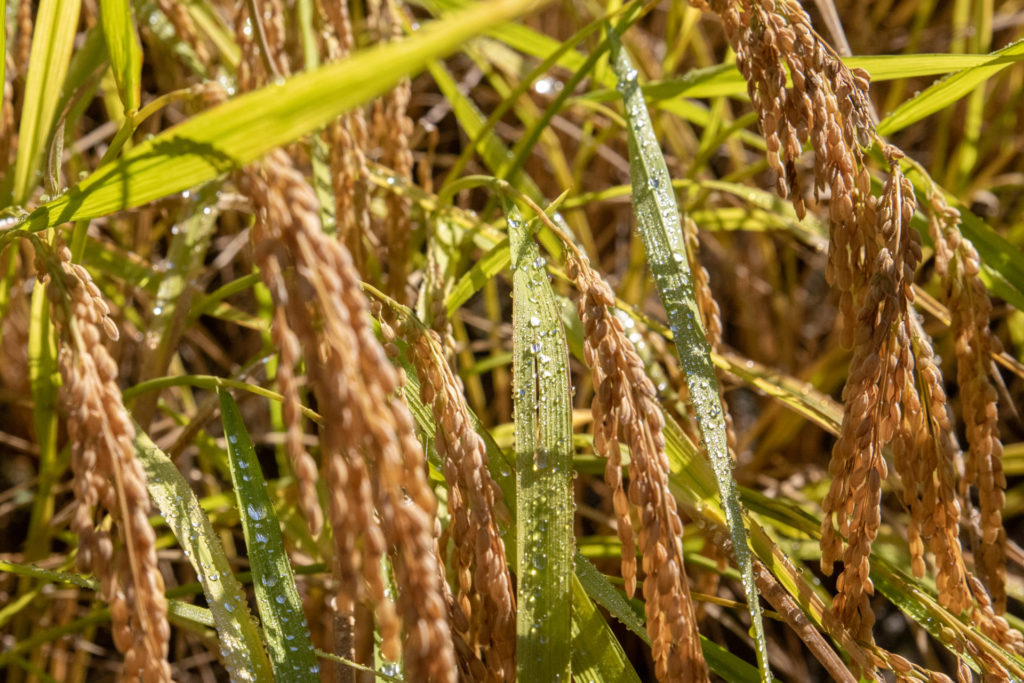
The scenery was very beautiful but the rain had caused the rice to fall over, making it difficult for the combine harvester to harvest. so we had to use sticks to remove the water and raise the fallen rice before harvesting the rice.

After the water is cleared away and the rice is woken up, the combine harvester is finally used to start harvesting. The combine harvests the rice in a counterclockwise direction around the field.
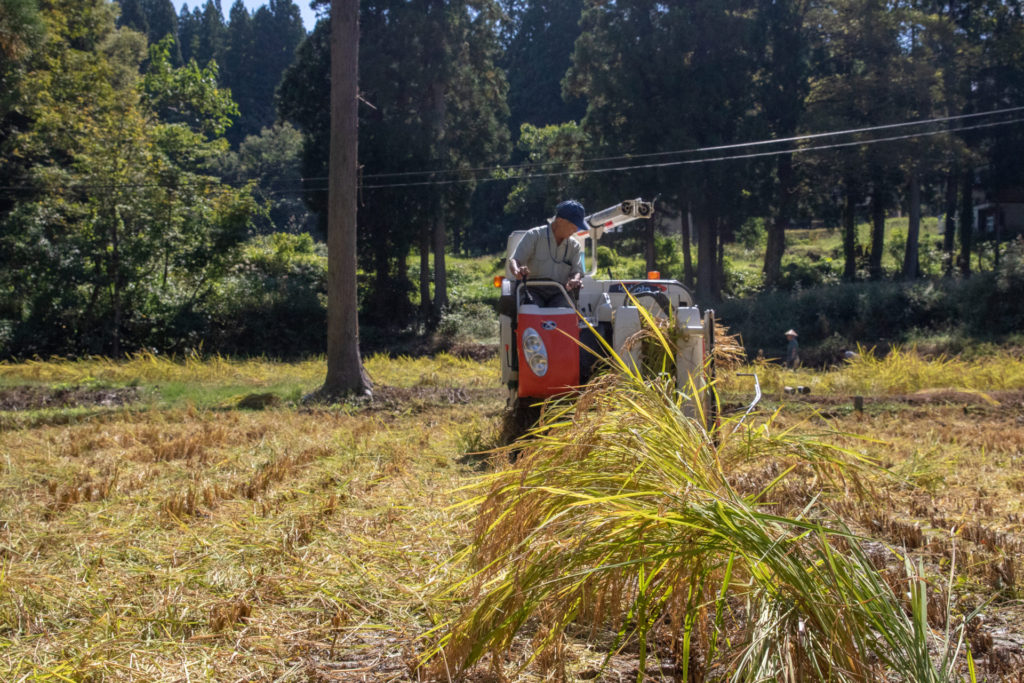
Threshing
Once the rice is harvested, the next step is to thresh it. Threshing is the process of removing the unhulled parts from the rice that will become rice. Nowadays, combine harvesters can be used for threshing.
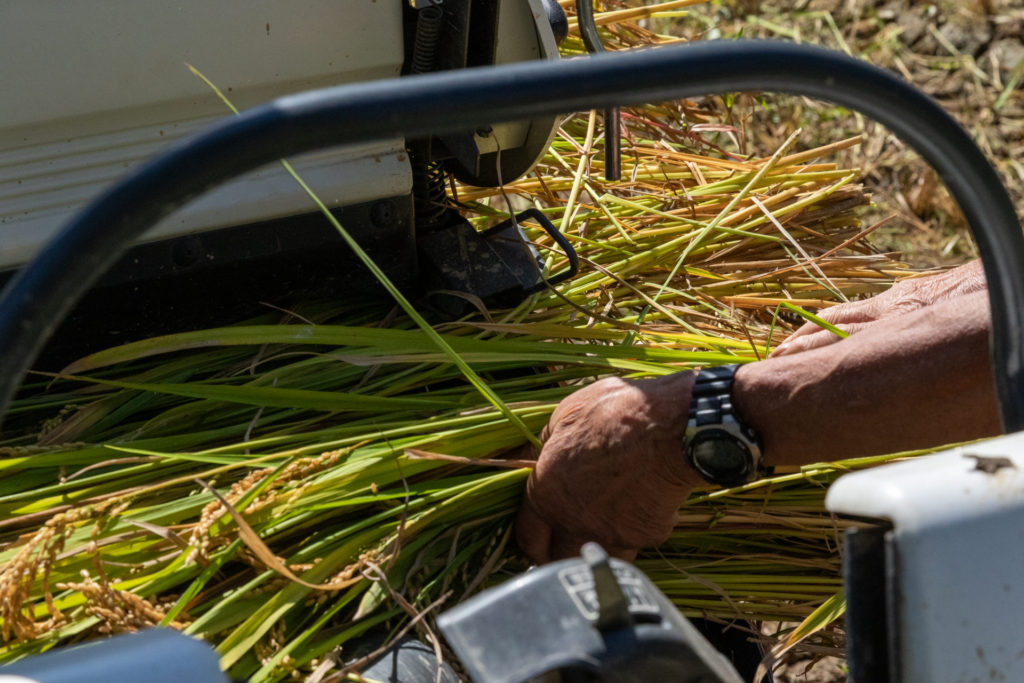
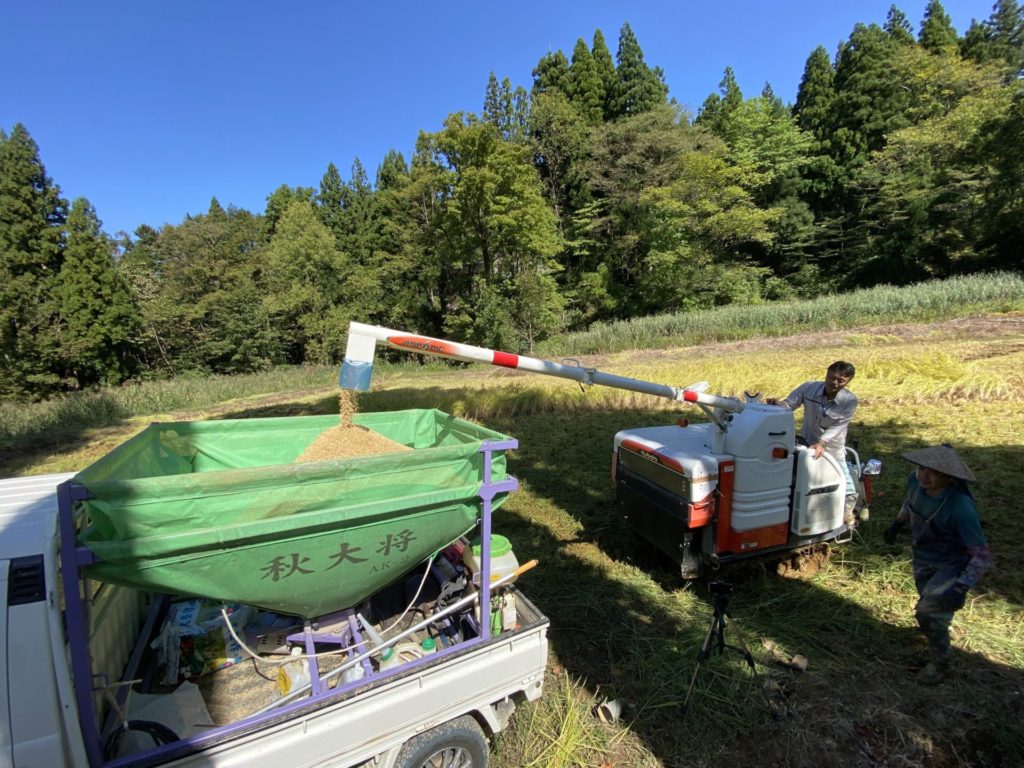
Hulling
After the threshing process is complete, the next step is hulling. Hulling is the process of removing the husks from the hulled rice to make brown rice. The moisture content must be reduced to some extent before hulling.
There are two ways to dry the rice: by machine or naturally by hanging the rice on a rack (This is called Hasagake[稲架掛け], traditional way of drying rice). The Kurokura community has a communal dryer, huller, and rice sorter, and they use these machines in turn.
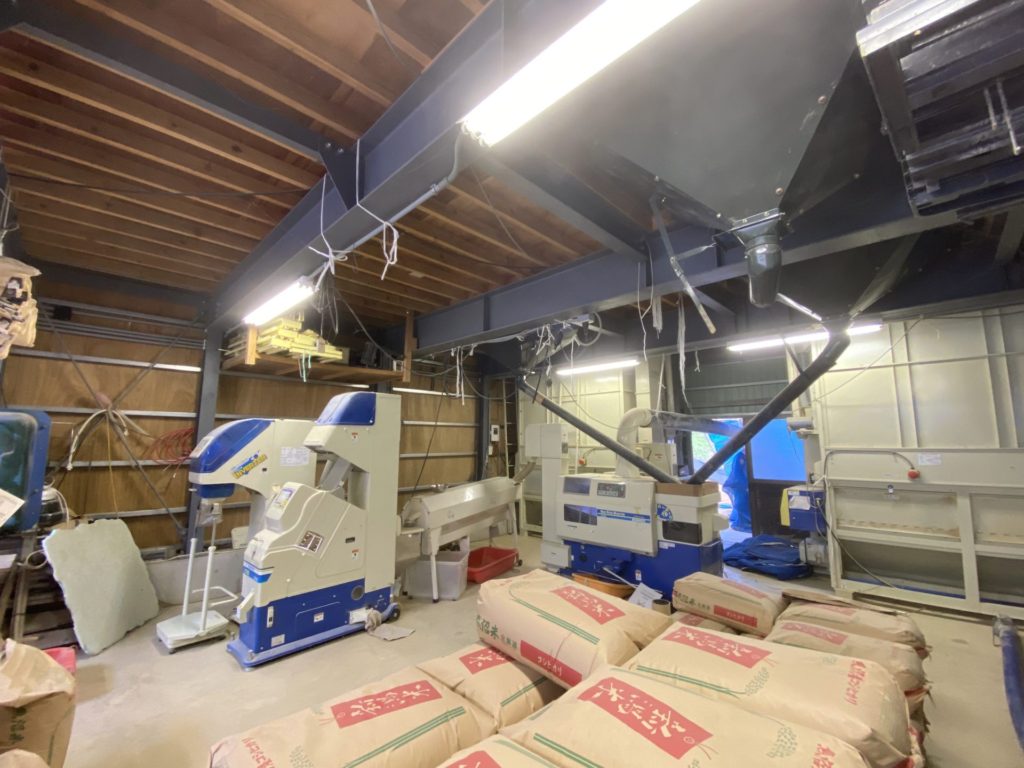
First, the rice is dried in a dryer.
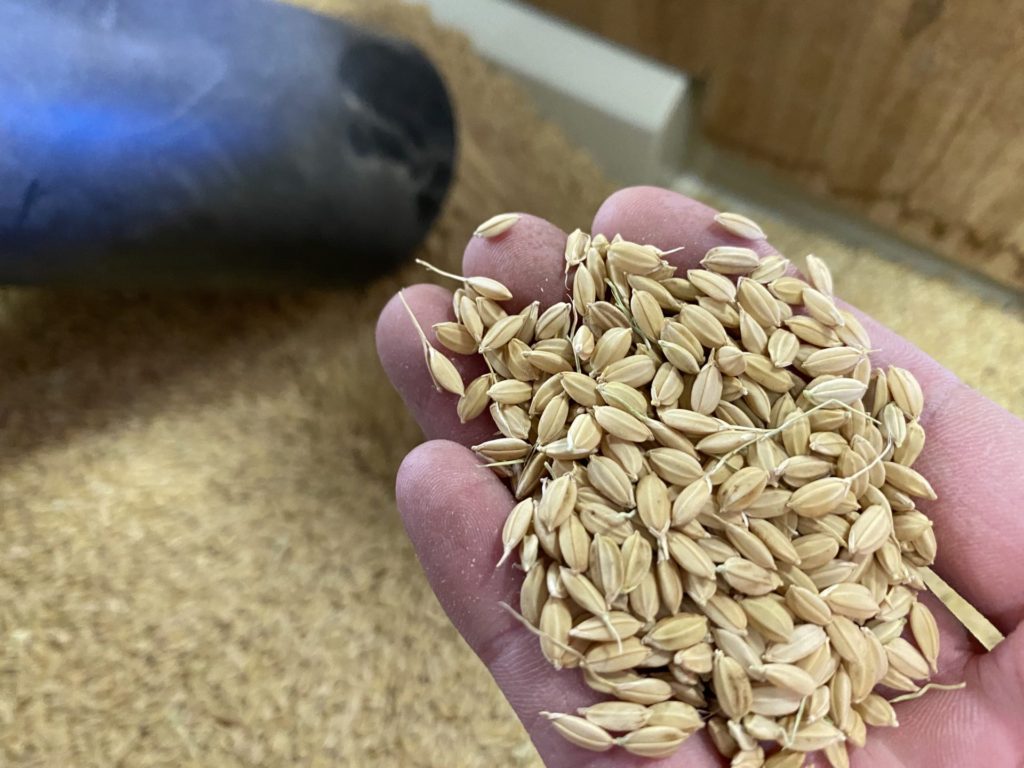
Incidentally, there are also many scenes in Matsunoyama where the traditional natural drying method of hasagake is used.
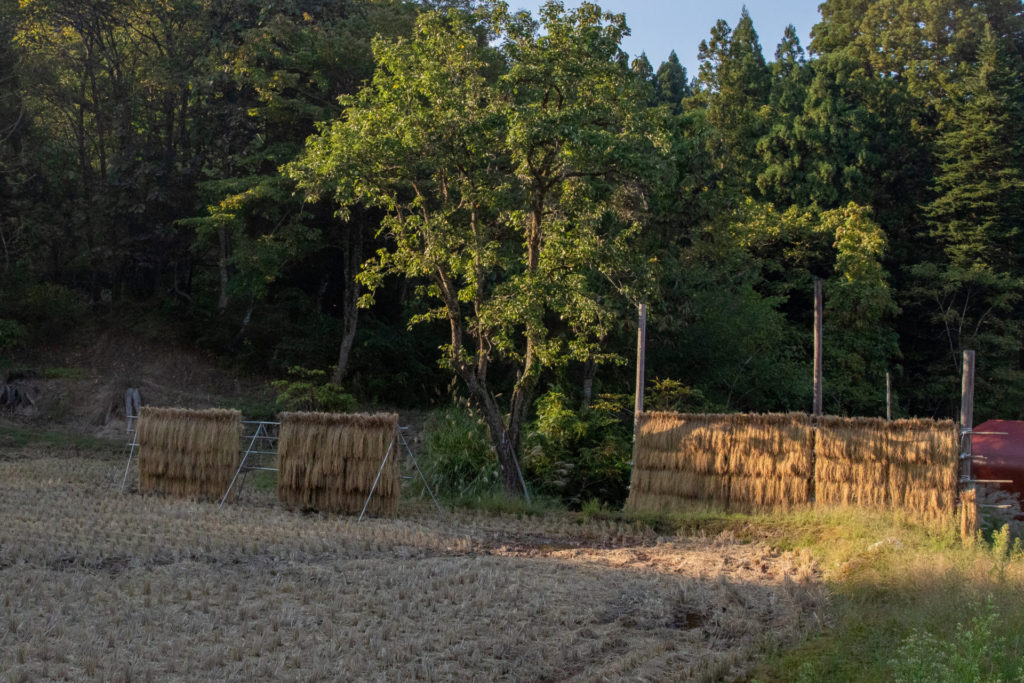
Then the huller removes the husk from the hulled rice. The grader removes low quality rice (e.g. diseased rice, stunted rice, etc) and other debris from the hulled brown rice and sorts out the brown rice with consistent quality.
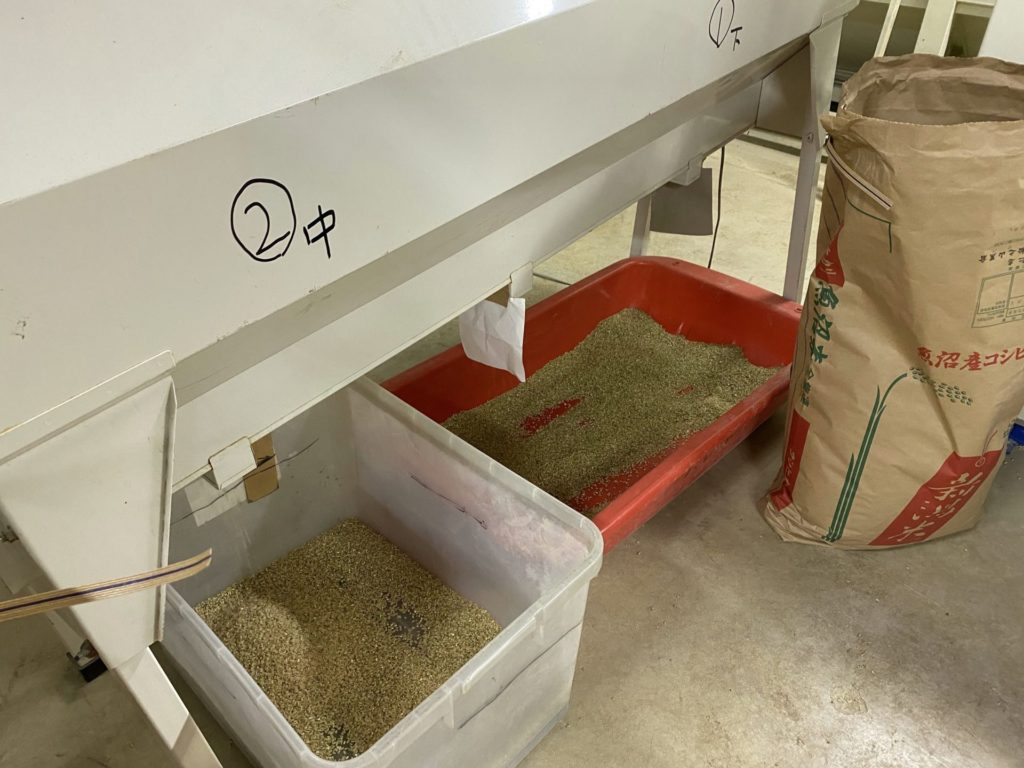
Looking at rice , it is interesting to see how the growing conditions vary from field to field. Rice that has been exposed to rice blast turn white, while some rice turn green and be rejected for other reasons. In rice cultivation, the process has to be adjusted depending on the location of the rice field (depends on topography, the level of drainage, sunlight, etc.). When I see the farmers discussing the reasons why the low quality rice were produced in this way, I was very surprised to learn that farmers have a detailed understanding of the changing conditions of the land depending on the season and the weather.
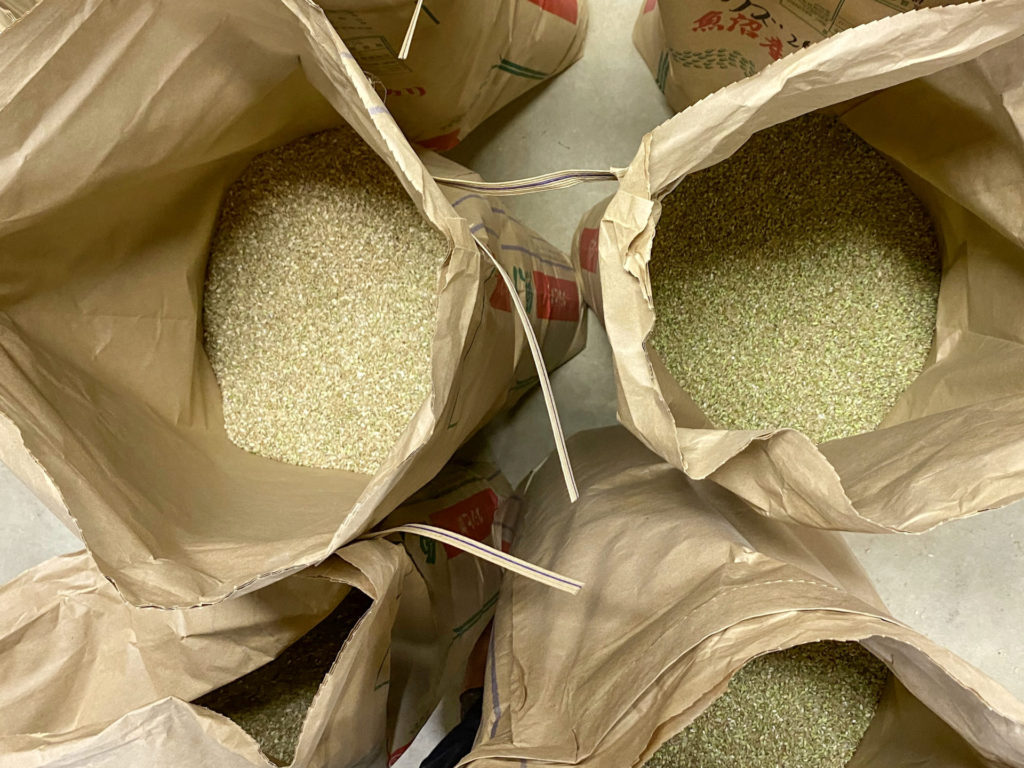
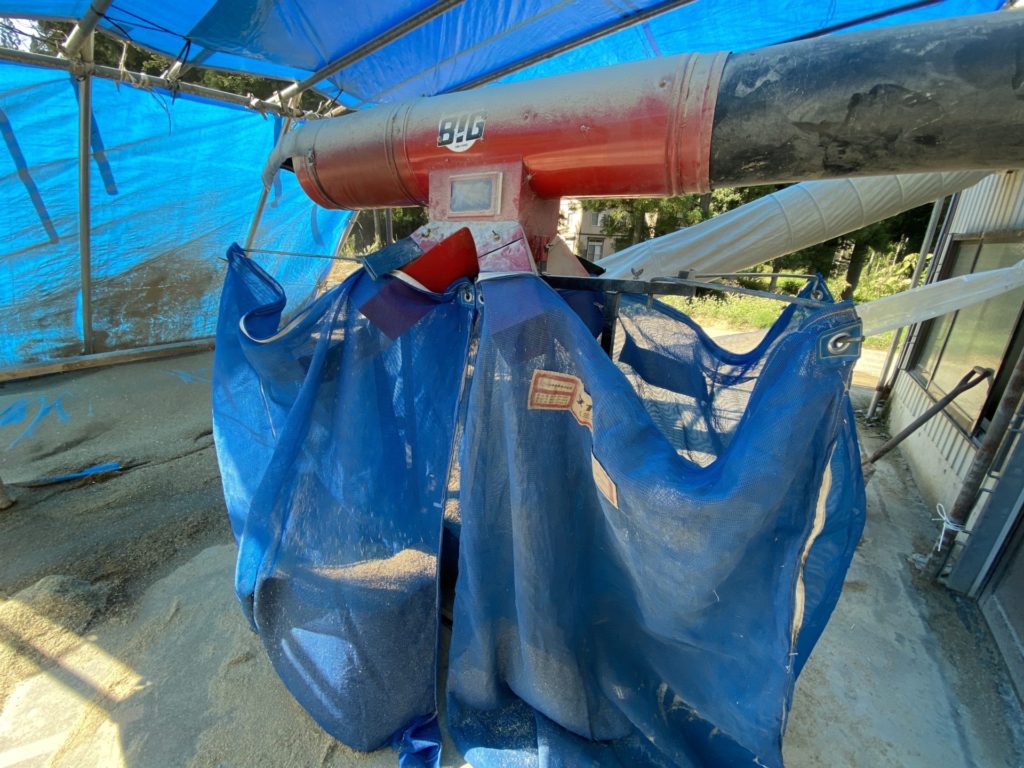
The husks from the hulling process can be used as fertilizer in the fields. Burning the husks was also seen in many places of Matsunoyama.
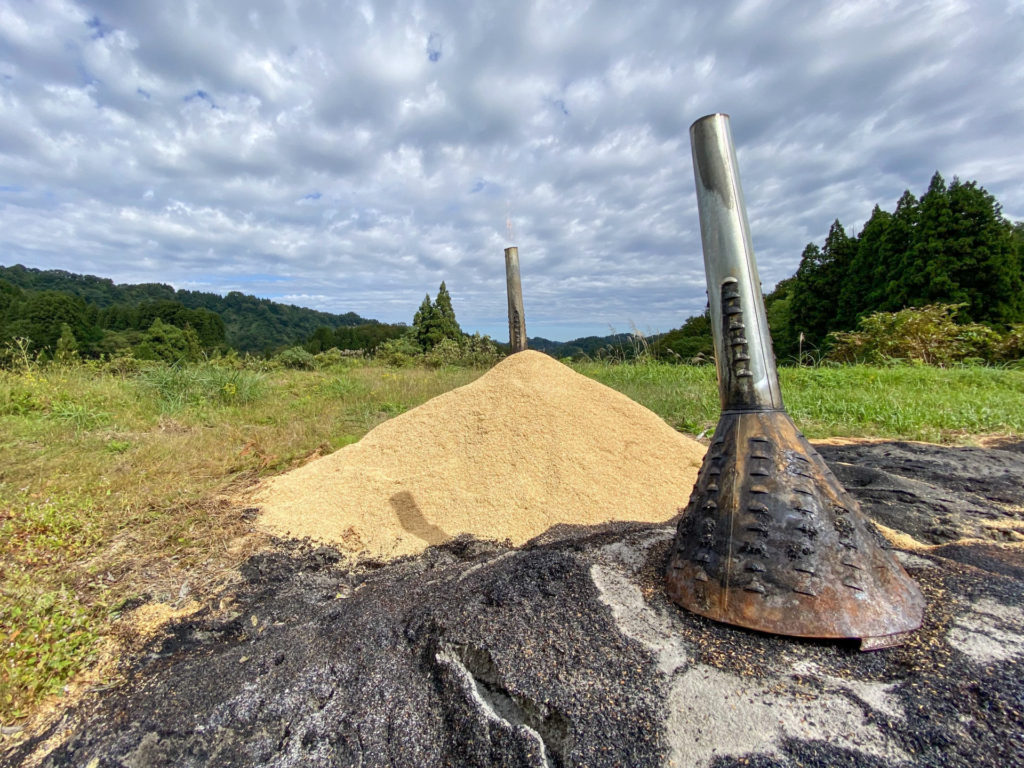
The sorted rice is then packed into bags.
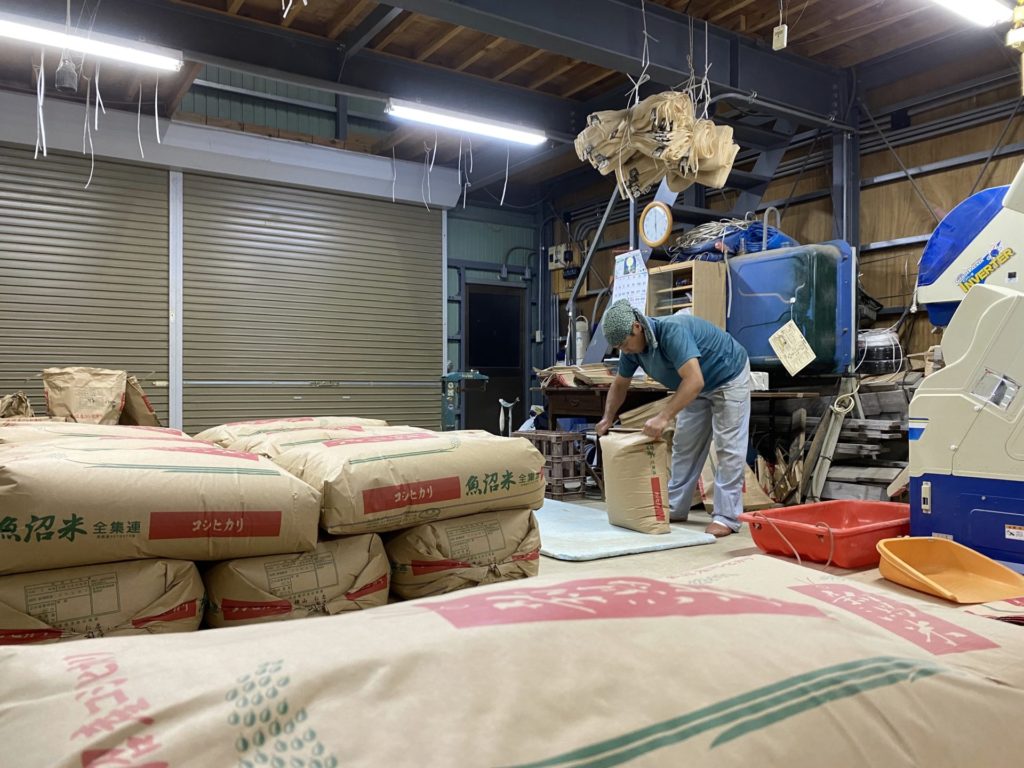
Grade Inspection
Once the rice is packed in bags, it goes through a final grading inspection. Here, the appearance and moisture content of the rice are inspected, and a grade stamp is affixed to each certification column. The grade of the rice becomes the evaluation standard for wholesale distributors, and the purchase price is determined by this grade. The grade of the rice is inspected by an agricultural inspector registered with the Minister of Agriculture, Forestry and Fisheries.
This must be a tense moment for the farmer. The selling price of the rice is determined by the grade, also the pride of the farmer must be so strong that they wants to produce good rice regardless of the money involved. I watched this inspection with bated breath.
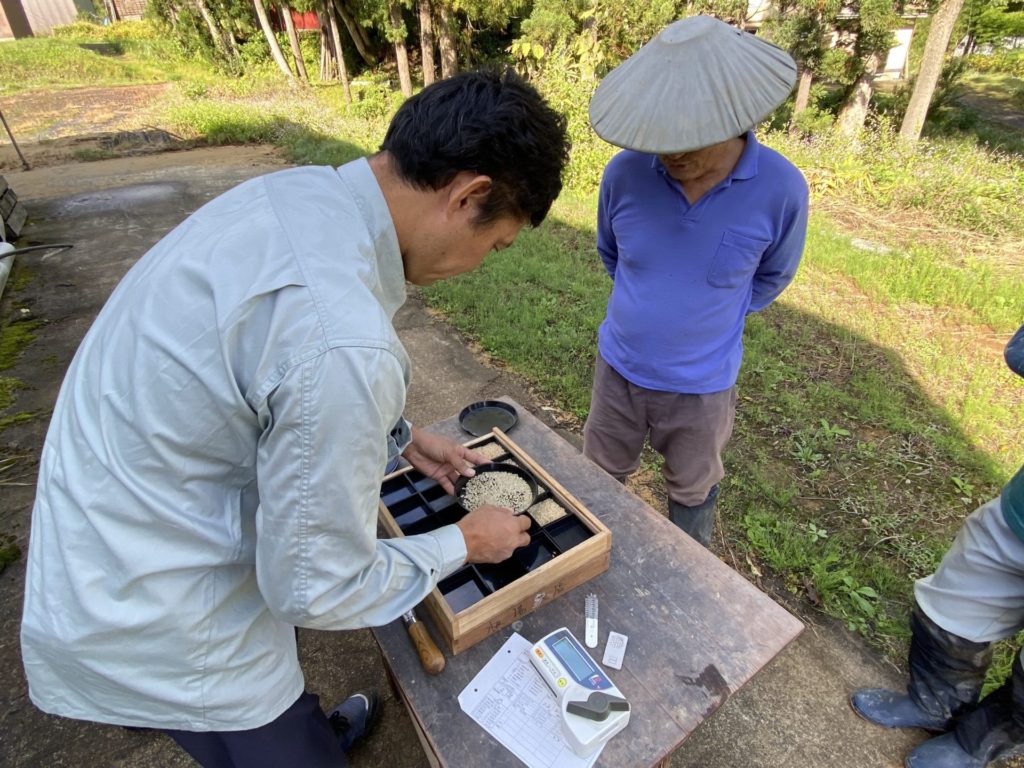
This is how I experienced the whole process of harvesting rice. I was deeply moved to think that the rice we eat all the time is supported by the hard work of these farmers.

